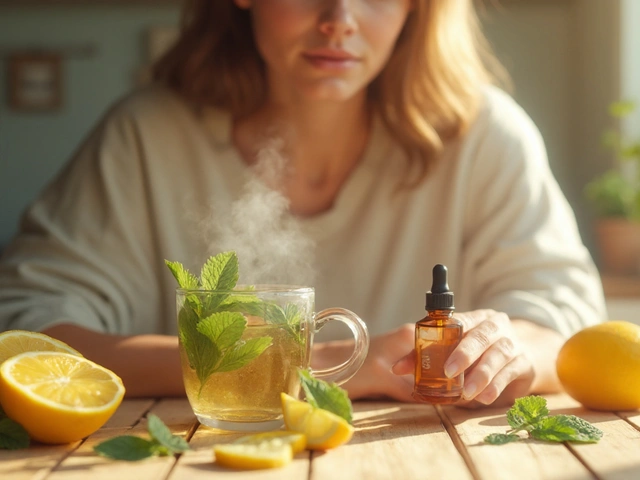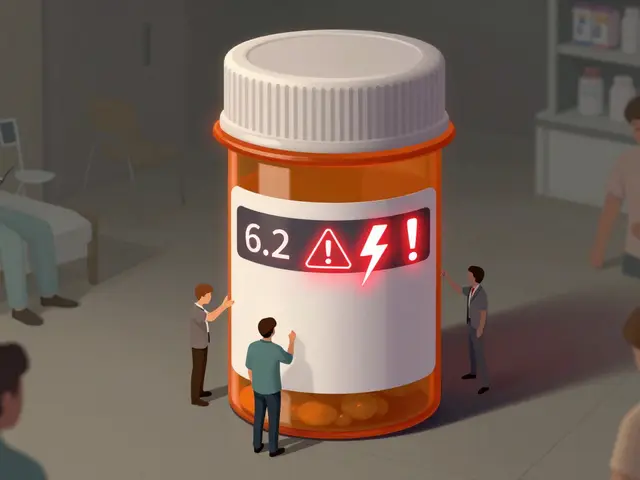 21
Jul,2023
21
Jul,2023
Understanding Juvenile Arthritis
In order to fully appreciate the role of Sulfasalazine in the treatment of juvenile arthritis, it is first important to understand what exactly juvenile arthritis is. Juvenile arthritis is a term used to describe a group of conditions involving joint inflammation that occur in children under the age of 16. It is an autoimmune disorder, meaning the body's immune system mistakenly attacks healthy cells and tissues. The most common type is juvenile idiopathic arthritis (JIA), which includes several subtypes.
What is Sulfasalazine?
Sulfasalazine is a type of medication known as a disease-modifying antirheumatic drug (DMARD). It is used to treat conditions like rheumatoid arthritis, psoriatic arthritis, and inflammatory bowel diseases. The drug works by reducing inflammation and swelling in the joints. However, how exactly it achieves this is not fully understood yet.
How Sulfasalazine Works in Juvenile Arthritis
As mentioned, the exact way in which Sulfasalazine works is not fully known, but it is believed to reduce inflammation by suppressing the immune system. This can help decrease the symptoms of juvenile arthritis such as pain, swelling and stiffness. Sulfasalazine can also slow down the progression of the disease, potentially preventing long-term damage to the joints.
Administering Sulfasalazine
Sulfasalazine is usually taken orally, in the form of a tablet. It can be taken with or without food. The dosage and frequency will depend on the specific needs of the child and the severity of their condition. Always consult with a healthcare provider for accurate dosage instructions.
Potential Side Effects of Sulfasalazine
As with any medication, Sulfasalazine can cause side effects. These can range from mild to severe, and can include nausea, vomiting, headache, dizziness, and rash. In rare cases, more serious side effects can occur, such as liver problems, serious infections, and severe skin reactions. It is crucial to monitor the child closely while they are on this medication and report any side effects to a healthcare provider immediately.
The Effectiveness of Sulfasalazine in Treating Juvenile Arthritis
Several studies have shown that Sulfasalazine can be effective in treating juvenile arthritis. It can help reduce pain and swelling, improve physical function, and slow the progression of the disease. However, the effectiveness can vary from child to child, and it may take several weeks or even months to see noticeable improvements.
Comparing Sulfasalazine with Other Treatments
While Sulfasalazine can be a valuable tool in the fight against juvenile arthritis, it is not the only option. There are other DMARDs available, as well as nonsteroidal anti-inflammatory drugs (NSAIDs), corticosteroids, and physical therapy. Each of these treatments has its own benefits and drawbacks, and the best treatment plan will depend on the individual child’s needs and circumstances.
Consulting with a Healthcare Provider
If your child has been diagnosed with juvenile arthritis, it is important to consult with a healthcare provider to discuss the best treatment options. This may include Sulfasalazine, but the decision should be made based on a comprehensive evaluation of the child's condition and overall health.
Living with Juvenile Arthritis
Living with juvenile arthritis can be challenging, but with the right treatment and support, most children with the condition can lead healthy, active lives. In addition to medication, lifestyle changes such as regular exercise, a healthy diet, and good sleep habits can also help manage symptoms.
Concluding Thoughts
While juvenile arthritis can be a daunting diagnosis, there are many effective treatment options available, including Sulfasalazine. With a comprehensive treatment plan and the right support, children with juvenile arthritis can manage their symptoms and lead full, active lives.






When starting sulfasalazine in a child, it's crucial to begin with a low dose and titrate slowly while watching for any gastrointestinal upset.
Regular liver function tests should be ordered every few months, especially during the first year of therapy.
Education of both the patient and the parents about potential rash or fever is essential so they can seek care promptly.
Adherence can be a challenge, so using a pill organizer or setting reminders often helps.
Overall, sulfasalazine can be a solid option when methotrexate isn’t effective, but it requires diligent follow‑up.
Sure, sulfasalazine is listed as a DMARD, it’s been around for decades, it’s cheap, it’s not a miracle drug, and, frankly, the evidence in kids is a mixed bag; you’ll see some kids improve, you’ll see others tolerate it poorly, and the side‑effect profile isn’t exactly trivial.
Parents must never ignore a rash, it could signal a serious reation.
Living with juvenile arthritis is not just a medical challenge, it’s a lesson in resilience and adaptability.
Each morning the child decides whether to join the playground or stay home, and that choice ripples through the family dynamic.
The mechanisms of sulfasalazine remain partially mysterious, reminding us that biology often operates beyond our neat explanations.
When we look at the immunomodulatory effects, we glimpse a broader conversation about how the immune system balances attack and repair.
In practice, the drug’s impact on joint swelling can unlock moments of freedom that many families cherish.
Yet the side‑effects, like nausea or a transient headache, can feel like an unwanted reminder that the body is foreign to itself.
Parents learn to negotiate dosing schedules, sometimes splitting pills to match school timetables, which teaches flexibility.
Healthcare providers who listen attentively can tailor advice, turning a generic prescription into a personalized roadmap.
Physical therapy, regular movement, and a supportive community often complement the pharmacology, creating a holistic approach.
It’s fascinating how a single molecule can dovetail with lifestyle changes to shape long‑term outcomes.
From a philosophical perspective, the child’s experience reframes the notion of “normal” childhood, expanding it to include perseverance.
The data on efficacy varies, and that uncertainty can be uncomfortable, but it also invites ongoing research and dialogue.
We should celebrate the modest successes, like a regained ability to draw or play a sport, as milestones worth noting.
At the same time, we must remain vigilant for rare complications, because early detection can prevent irreversible damage.
Ultimately, balancing hope with realistic expectations is the art of navigating chronic illness.
And perhaps, in the broader scheme, these journeys remind us that health is a collective responsibility, weaving together medicine, family, and society.
Oh great, another “holistic” spiel about chronic disease; let’s just toss in some buzzwords, call it “patient‑centred care,” and ignore the hard data that sulfasalazine hardly outperforms a placebo in many trials.
I understand the frustration, but dismissing the entire evidence base oversimplifies a nuanced therapeutic landscape.